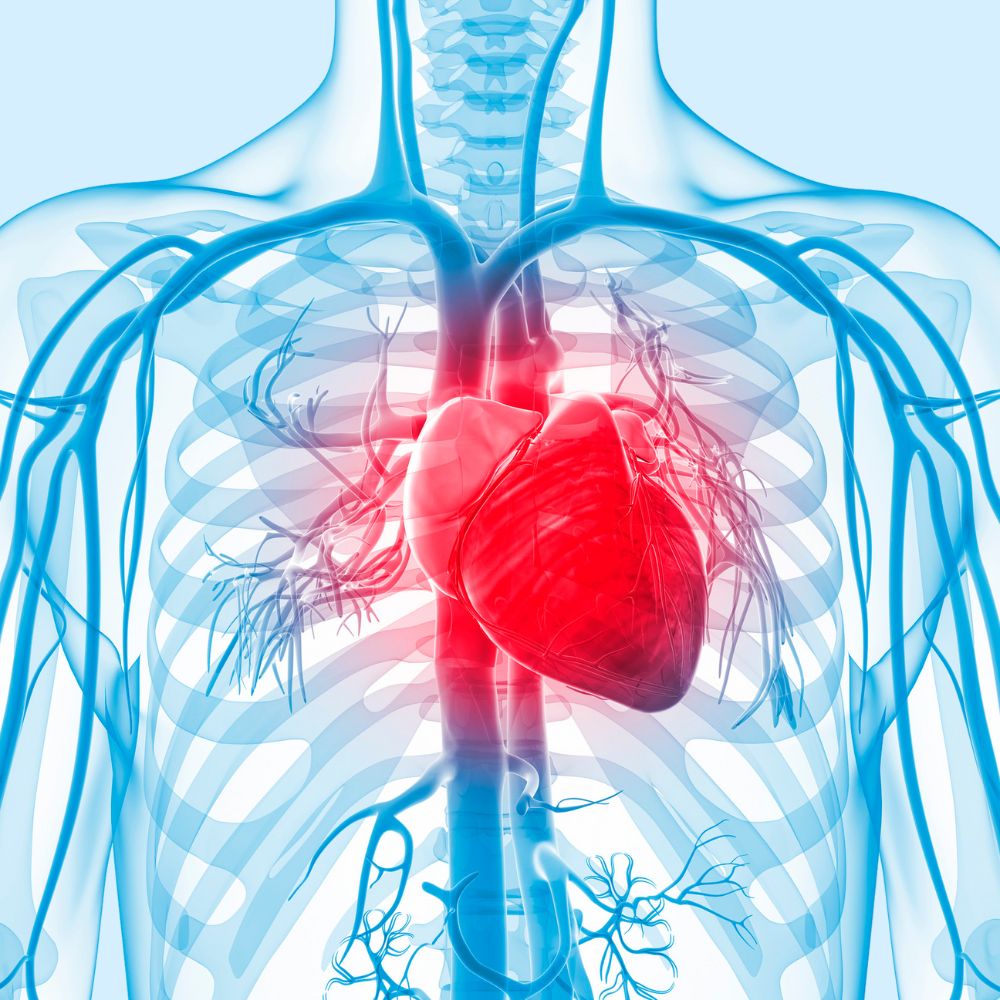Cardiology care tips for a longer-lasting cardiovascular life
Cardiology care tips for a longer-lasting cardiovascular life
Blog Article
Recognizing the Importance of Cardiology in Modern Healthcare Solutions
Cardiology plays an important duty in modern-day medical care, specifically as heart problem continues to be the leading source of mortality worldwide. Developments in diagnostics and treatment have transformed client care, enabling earlier treatments and boosted results. The shift towards precautionary cardiology equips individuals to manage their wellness proactively. As modern technology proceeds to progress, the combination of ingenious options may even more redefine cardiology's influence on public health, motivating a better evaluation of emerging trends and their effects.
The Occurrence of Heart Illness and Its Effect On Public Health
Although heart disease continues to be the leading reason of death globally, its influence prolongs far past specific people to impact public health systems and economic situations. The high frequency of cardiovascular disease places a significant strain on medical care resources, demanding increased financing for therapy, rehabilitation, and avoidance programs. Public wellness campaigns should deal with threat variables such as obesity, smoking cigarettes, and sedentary lifestyles, which contribute greatly to the climbing incidence of heart conditions.Moreover, the financial worry connected with heart problem is tremendous, encompassing not only direct medical prices but also indirect expenses related to lost efficiency and early mortality. Areas face difficulties in handling these prices, frequently resulting in variations in health care access and outcomes. As the population ages and lifestyle-related dangers proceed to intensify, the necessity for reliable cardiology treatments comes to be vital. As a result, resolving heart problem is not just a matter of private health and wellness but additionally a crucial public health top priority.
Developments in Heart Diagnostics and Imaging Techniques
Recent developments in cardiac diagnostics and imaging strategies have changed the field of cardiology, enhancing the capacity to identify and keep track of cardiovascular disease. Methods such as heart MRI, CT angiography, and echocardiography have ended up being progressively advanced, giving comprehensive pictures of cardiac frameworks and functions. These modalities permit the very early recognition of conditions like coronary artery disease, cardiac arrest, and valvular disorders.Moreover, advancements in non-invasive diagnostics, such as wearable technology and remote surveillance devices, have actually encouraged clients and health care suppliers. These devices assist in real-time monitoring of heart rhythms and other vital signs, causing prompt treatments. Furthermore, synthetic knowledge is being incorporated right into imaging evaluation, boosting accuracy and efficiency in medical diagnosis.
Advancements in Treatment Options for Heart Conditions
Recent developments in cardiology have led to substantial technologies in treatment choices for heart conditions. These include advanced medical methods that boost procedural results and arising medications that supply new opportunities for treatment. As the field develops, these technologies play an important function in improving client treatment and end results.
Advanced Surgical Techniques
Developments in surgical strategies have actually transformed the landscape of cardiology, providing brand-new wish for patients with heart disease. Minimally intrusive treatments, such as catheter-based treatments, have actually substantially decreased healing times and health center stays. Techniques like robotic-assisted surgical treatment improve accuracy, enabling specialists to browse intricate physiological frameworks with better precision. Improvements in imaging modern technology facilitate real-time visualization during procedures, improving end results. Transcatheter aortic shutoff substitute (TAVR) exhibits an innovation in dealing with aortic constriction, making it possible for shutoff replacement without open-heart surgical treatment. Additionally, hybrid approaches that combine surgical and catheter-based approaches give customized options for different cardiac issues. These innovative medical strategies not just improve client safety yet likewise broaden treatment choices, underscoring the vital duty of innovation in modern-day cardiology methods.
Emerging Medications and Treatments
As the landscape of cardiology proceeds to progress, emerging drugs and therapies play a pivotal duty in improving therapy choices for heart disease. Innovations such as unique anticoagulants and advanced lipid-lowering representatives have changed the administration of heart diseases, significantly lowering individual morbidity and mortality. In addition, the advancement of genetics therapies and regenerative medicine offers encouraging methods for dealing with conditions formerly deemed irreparable. Professional tests are constantly revealing the efficiency of these therapies, pressing the boundaries of typical treatments. In addition, the assimilation of digital wellness technologies assists in tailored medicine, enabling tailored treatment strategies based upon genetic and way of life variables. Jointly, these advancements highlight the vibrant nature of cardiology, enhancing individual end results and redefining standards of care in modern health care.
The Function of Preventive Cardiology in Individual Treatment
Precautionary cardiology plays an essential role in client care by concentrating on the identification of danger aspects that contribute to heart illness. Through lifestyle modification techniques and early detection techniques, healthcare suppliers can effectively reduce the occurrence of cardio occasions - Cardiologist near me. This aggressive strategy not just improves patient end results yet additionally advertises long-lasting health
Risk Factor Identification
While heart diseases stay a leading source of morbidity and death worldwide, efficient threat variable identification acts as a cornerstone of preventative cardiology. Recognizing danger factors such as high blood pressure, diabetes mellitus, hyperlipidemia, and household history is important for very early intervention. Healthcare specialists utilize different evaluating methods to review these elements, allowing for customized safety nets. Furthermore, comprehending a client's way of living options, such as smoking and physical inactivity, better notifies threat evaluations. This comprehensive analysis enables medical professionals to develop individualized care plans targeted at mitigating risks. By prioritizing threat element recognition, healthcare systems can improve individual outcomes and decrease the total concern of cardio diseases, eventually adding to improved public health and wellness methods and source allocation.
Way Of Life Alteration Techniques
A wide variety of researches highlights the critical function of way of life alteration approaches in lowering heart disease danger. These methods incorporate nutritional adjustments, increased physical activity, cigarette smoking cessation, and weight monitoring. By taking on a heart-healthy diet regimen abundant in fruits, veggies, entire grains, and lean healthy proteins, people can lower cholesterol degrees and high blood pressure. Normal physical task strengthens the heart and improves overall cardio health and wellness. Furthermore, quitting cigarette smoking significantly lowers the danger of heart illness and improves recuperation prices for those with current conditions. Weight monitoring additionally adds to cardio health and wellness by reducing other risk factors such as diabetes mellitus and high blood pressure. Applying these way of life alters not only promotes individual health yet likewise acts as a cornerstone of preventative cardiology in individual care.
Early Discovery Strategies
Way of life modifications greatly add to minimizing heart disease threats, however they are most effective when paired with very early detection strategies. Precautionary cardiology emphasizes the value of determining potential heart concerns before they escalate right into major problems. Methods such as high blood pressure surveillance, cholesterol testing, and useful content advanced imaging technologies like echocardiograms play critical functions in evaluating cardiovascular health. Biomarkers and genetic testing additionally enhance the accuracy of early discovery, enabling tailored preventative techniques. Normal cardiac risk examinations empower doctor to intervene proactively, potentially stopping cardiac arrest and strokes (Dr Garcia). By integrating these very early detection techniques right into regular care, clients can profit from timely way of life treatments and targeted therapies, ultimately boosting and improving outcomes lifestyle
Integrating Modern Technology Into Cardiology Practices
As developments in innovation proceed great post to read to improve various areas, the integration of ingenious tools and systems right into cardiology techniques has actually come to be important for improving individual care and results. Telemedicine platforms allow cardiologists to keep an eye on people from another location, improving access to care while reducing the burden on health care facilities. Wearable tools, such as smartwatches, allow constant heart rate tracking, informing both doctors and clients to prospective problems in real-time. Additionally, synthetic intelligence (AI) is being utilized to analyze substantial quantities of heart data, helping in early diagnosis and personalized therapy strategies. Advanced imaging techniques, consisting of 3D echocardiography, improve visualization of heart structures, resulting in more precise treatments. Digital health and wellness records (EHRs) enhance person info management, making certain that cardiologists have instant access to important information. With each other, these technological advancements are transforming cardiology, advertising aggressive administration and enhanced health outcomes for people with cardiovascular conditions.
The Relevance of Individual Education and Interaction
Patient education and learning and engagement play an essential role in the administration of cardio health. By outfitting patients with understanding concerning their conditions, therapy alternatives, and lifestyle modifications, doctor equip individuals to take an active function in their treatment. This proactive technique can bring about improved adherence to recommended drugs, nutritional changes, and exercise programs, inevitably reducing the risk of complications.Engagement likewise promotes a solid patient-provider partnership, encouraging open communication and depend on. When people really feel informed and involved, they are a lot more most likely to voice problems and ask inquiries, which can cause better scientific end results. Additionally, educational resources, such as workshops or electronic platforms, can boost understanding and advertise self-management techniques. In general, prioritizing individual education and learning and involvement is important for enhancing cardiovascular health and wellness, enhancing lifestyle, and reducing healthcare costs related to heart diseases.
Future Trends in Cardiology and Their Possible Influence

Frequently Asked Inquiries
What Way Of Living Adjustments Can Minimize Heart Problem Danger?
The current question addresses way of living modifications that can considerably decrease heart problem threat. Dr Garcia. Taking on a balanced diet plan, involving in routine physical activity, maintaining a healthy and balanced weight, handling stress, and staying clear of tobacco can notably enhance cardiovascular health
Just How Can I Acknowledge Very Early Indications of Heart Problems?
Identifying early indicators of heart problems entails tracking signs and symptoms such as breast pain, shortness of breath, exhaustion, and irregular heart beat. Timely recognition of these signs can motivate required clinical evaluation and treatment for better end results.
What Are the Differences Between Cardiologists and Heart Surgeons?
The differences in between cardiologists and heart cosmetic surgeons exist in their roles; cardiologists mostly diagnose and handle heart problems through non-invasive techniques, while cardiac cosmetic surgeons do surgical procedures to deal with structural heart concerns. Each plays a vital, unique function.

Exactly how Frequently Should I Obtain My Heart Wellness Checked?
The regularity of heart medical examination varies based upon private risk factors. Usually, grownups ought to undergo analyses each to two years, while those with present problems may call for more frequent analyses as encouraged by healthcare specialists.
What Function Does Genetics Play in Heart Condition Danger?
Genes considerably influences cardiovascular disease danger, with familial patterns suggesting inherited problems. Specific genetics can predispose individuals to hypertension, cholesterol problems, and other cardio problems, highlighting the value of genetic testing in evaluating heart wellness. Heart disease stays the leading cause of death around the world, its effect expands far past individual clients to influence public health systems and economic situations. Public health efforts have to deal with danger elements such as excessive weight, cigarette smoking, and less active way of lives, which contribute substantially to the rising incidence of heart conditions.Moreover, the financial worry connected with heart condition is immense, including not just straight medical costs web however additionally indirect expenses related to lost efficiency and early mortality. Precautionary cardiology plays an essential role in individual treatment by concentrating on the recognition of risk elements that contribute to heart illness. Fabricated knowledge (AI) and equipment learning are enhancing diagnostics and client tracking, making it possible for very early discovery of heart conditions. The distinctions in between cardiologists and heart surgeons lie in their roles; cardiologists primarily handle and identify heart conditions with non-invasive techniques, while cardiac cosmetic surgeons carry out surgical procedures to correct structural heart issues.
Report this page